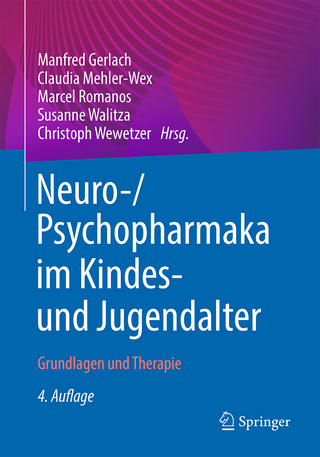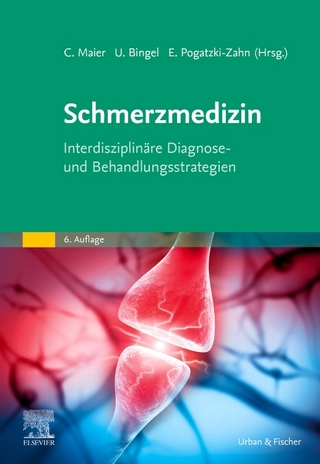
Thermoregulation Part II
Elsevier Science Ltd (Verlag)
978-0-444-64074-1 (ISBN)
In addition, the book covers the physiology and neuroanatomy of the thermoregulation system and provides descriptions of how the regulation of body temperature intervenes with other physiological functions (such as sleep, osmoregulation, and immunity), stress, exercise and aging. Basic sections serve as an introduction to the four clinical sections: Body Temperature, Clinical Significance, Abnormal Body Temperature, Thermoregulation in Neurological Disease and Therapeutic Interventions.
Andrej A. Romanovsky, MD, PhD, is an integrative physiologist and neuroscientist studying body temperature regulation. Originally from St. Petersburg, Russia, Dr. Romanovsky was granted his MD with Distinction by the Ivan Pavlov Medical University (St. Petersburg) in 1984. He completed his pathophysiology residency in 1986 at the Pavlov Institute of Experimental Medicine of the Russian Academy of Medical Sciences in St. Petersburg. In 1989, he received a PhD in physiology from the Institute of Physiology of the National Academy of Sciences (Minsk, Belarus). Following postdoctoral training at the University of Tennessee Medical School in Memphis (1991–1994), Dr. Romanovsky accepted the position of Associate Scientist and Director of the Thermoregulation Laboratory at the Legacy Health System in Portland, Oregon (1994–2000). Since 1999, he has been working as Professor at St. Joseph’s Hospital and Medical Center in Phoenix, Arizona, where he directs his basic research laboratory (FeverLab). He also holds an Adjunct Professor appointment at the Arizona State University School of Life Sciences in Tempe, Arizona. Dr. Romanovsky has published more than 100 articles in peer-reviewed scientific journals. His research has been funded by the National Institutes of Health, the State of Arizona, and a number of pharmaceutical companies and foundations. He has served on study sections and reviewed grant applications for the National Institutes of Health, the National Science Foundation, the Medical Research Council (UK), the Canadian Institutes of Health Research, the Swedish Research Council, the Dutch Research Council, the National Research Foundation (South Africa), the National Council of Romania, the Polish National Science Center, the government of Hong Kong, and other agencies in many countries. He has served on boards of multiple journals including the American Journal of Physiology (Regulatory, Integrative and Comparative Physiology), Public Library of Science One (Academic Editor), and Acta Physiologica Hungarica (International Board), and is the founding Editor-in-Chief of the journal Temperature. He is a co-founder of Catalina Pharma, Inc.
SECTION VI. Normal and abnormal body core and peripheral temperatures 29. Body temperature and clinical thermometry 30. Brain Temperature: From Physiology and Pharmacology to Neuropathology 31. Heat exhaustion 32. Heatstroke 33. Accidental hypothermia 34. Fever and hypothermia in systemic inflammation 35. Stress-induced hyperthermia and hypothermia 36. Body temperature regulation and drugs of abuse 37. Body temperature regulation and anesthesia 38. Malignant hyperthermia 39. Neuroleptic malignant syndrome and serotonin syndrome 40. Acral coldness – severely reduced blood flow to fingers and toes 41. Consequences of Perioperative Hypothermia
SECTION VII. THERMOREGULATION IN NEUROLOGICAL DISEASE 42. Thermoregulatory Dysfunction in Multiple Sclerosis 43. Thermoregulation in Parkinson disease 44. Hypothermia as a risk factor for Alzheimer disease 45. Thermoregulation in epilepsy 46. Thermoregulation in amyotrophic lateral sclerosis 47. Thermoregulatory Disorders in Huntington's Disease 48. Thermoregulation in neuropathies 49. Thermoregulation in brain injury 50. Thermoregulation Following Spinal Cord Injury
SECTION VIII. THERAPEUTIC INTERVENTIONS 51. Hypothermia in Acute Ischemic Stroke Therapy 52. Selective brain hypothermia 53. Therapeutic hyperthermia 54. Antipyretic therapy: Clinical pharmacology
| Erscheinungsdatum | 28.12.2018 |
|---|---|
| Reihe/Serie | Handbook of Clinical Neurology |
| Verlagsort | Oxford |
| Sprache | englisch |
| Maße | 215 x 275 mm |
| Gewicht | 1230 g |
| Themenwelt | Medizin / Pharmazie ► Medizinische Fachgebiete ► Neurologie |
| Naturwissenschaften ► Biologie ► Humanbiologie | |
| Naturwissenschaften ► Biologie ► Zoologie | |
| ISBN-10 | 0-444-64074-6 / 0444640746 |
| ISBN-13 | 978-0-444-64074-1 / 9780444640741 |
| Zustand | Neuware |
| Haben Sie eine Frage zum Produkt? |
aus dem Bereich


